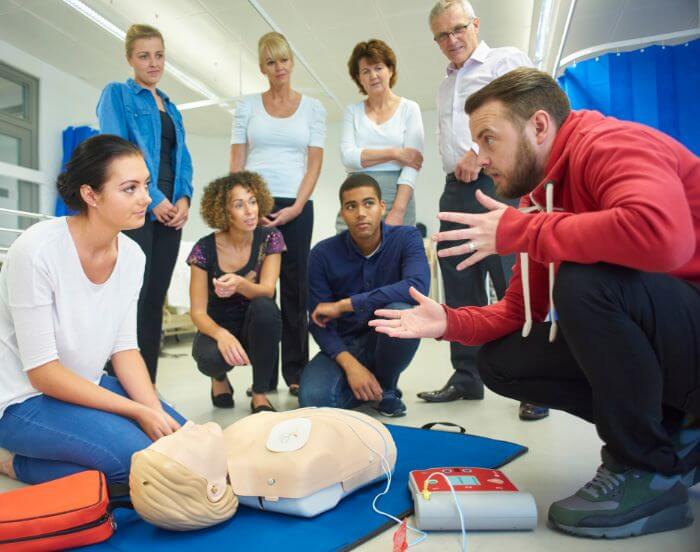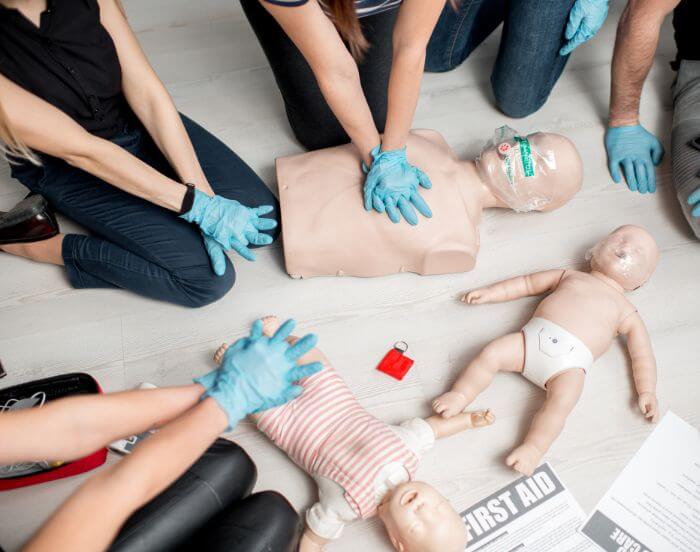First aid training for employees is an essential aspect of workplace safety. In an emergency, having employees trained in basic first aid can mean the difference between life and death.
In this article, we will explore the importance of first aid training for employees to stop bleeding and the different types of training materials available.
Understanding the Importance of Medical Training
Medical training is essential in emergency situations, but also it’s good to know in your daily life. Without it, the ability to properly care for an injured person is greatly diminished. This is why it is crucial for employees to learn from first responders to have at least basic medical training.
Additionally, every second counts in an emergency, and having employees trained to stop the bleeding can help stabilize an injured person until professional medical help arrives.
Moreover, employees may not know how to properly handle and respond to an emergency without proper training supplies, which can lead to potentially disastrous consequences. It’s important for everyone to learn how to use these supplies, even when they are only high school students.
There are plenty of digital materials to learn about first aid, blood loss, and disaster medicine to understand what to do in certain situations.

Handling a Life-threatening Bleeding Emergency
Life-threatening bleeding emergencies are a serious concern in any workplace or public setting. These types of emergencies can happen due to various causes, such as an accident, a natural disaster, or an act of violence. Not knowing how to stop bleeding in these situations, for instance, might cause serious injury or even death.
Furthermore, a life-threatening bleeding emergency is characterized by excessive and uncontrolled bleeding that can lead to shock, organ damage, and death if left untreated.
Trained employees in bleeding control skills are crucial in such situations. These skills include applying direct pressure, tourniquets, and hemostatic dressings.
First Aid Training for Employees
First aid training teaches individuals how to respond to and manage emergency situations, such as medical emergencies, accidents, and injuries.
The specific content of first aid training can vary depending on the provider and the level of training. Here are some types of first-aid training:
1. Basic First Aid Training
Basic first aid training typically includes instructions on performing cardiopulmonary resuscitation (CPR), using an automated external defibrillator (AED), controlling bleeding, and responding to choking and other breathing emergencies.
2. Advanced First Aid Training
Advanced first aid training, such as a trauma first aid training session, may include instruction on recognizing and managing more severe injuries, such as broken bones, head injuries, and severe bleeding.
3. Specialized First Aid Training
Some first aid training courses also include instruction on responding to specific types of emergencies, such as natural disasters, or providing first aid in particular settings, such as in a wilderness or remote area.

Helping the Injured Person: Trauma First Aid Training
In emergency situations, providing care for the wounded person is of the utmost importance. This is particularly true in cases of severe trauma, such as traumatic injuries caused by accidents, violence, or natural disasters.
This type of training goes beyond basic first aid and covers the recognition and management of life-threatening injuries, such as a bleed course, severe trauma, head injuries, and broken bones.
Final Thoughts
It is clear that a first aid trainer needs to teach employees and give training, such as ABC first aid training, first aid trauma training, and CPR first aid training to guarantee workplace safety. Not only does it equip employees with the necessary skills to handle emergencies, but it also ensures the safety of customers and clients.
Additionally, it is essential to note that different types of first aid training exist, such as trauma first aid training and bleeding control skills, which cater to different needs.
Employers must take the necessary steps to prepare their employees for traumatic injury emergencies by investing in first aid education.

